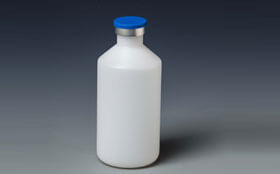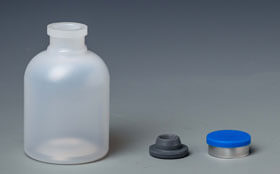Plastic vaccine bottles are mainly used for the storage of inactivated vaccines in the veterinary medicine industry. The raw materials used to make this kind of packaging are mainly polyethylene (PE) and polypropylene (PP). So what is the difference between these two raw materials?
100ml autoclavable vaccine vial
Polypropylene is a white waxy material with transparent and light appearance, colorless, odorless, and non-toxic. It has good high temperature resistance and can resist corrosion by most acids, alkalis and solvents. But this kind of raw material is easy to be brittle at low temperature, so some additives will be added during production to improve the toughness of the bottle. The use temperature of polyethylene is -100~-70°C. It has good low temperature resistance, insoluble in general solvents at room temperature, low water absorption, excellent electrical insulation performance, and toughness better than polypropylene.
Comparing the two raw materials, the corrosion resistance is almost the same, but the transparency of polypropylene is higher than that of polyethylene, and it can be made into a translucent plastic vaccine bottle. Thanks to its good high temperature resistance, polypropylene bottles can be terminally sterilized, and the low temperature resistance and toughness of polyethylene are better than polypropylene raw materials.
In general, if pharmaceutical companies require terminal sterilization of plastic vaccine bottles, they will choose polypropylene raw materials, and if the packaging has high requirements for toughness, they will choose polyethylene raw materials. The various performance advantages of these two raw materials complement each other and meet the different needs of different veterinary drug manufacturers for vaccine packaging.


没有评论:
发表评论